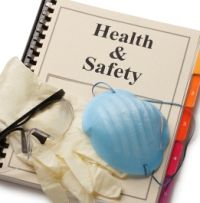

Wherever you look, whether it is in media publications, on social media or even just conversations with friends over video chat platforms, questions are beginning to arise about how current COVID-19 restrictions will be eased or lifted, and what that will mean for businesses and society. In truth, we have no way of knowing for certain until the risk is over and the current exceptional social restrictions are lifted fully.
Questions will undoubtedly arise throughout the business world about whether anything more needs to be done in the aftermath of this pandemic to secure the health, safety and welfare of employees. Particularly considering the rapid and unexpected spread of this coronavirus took many by surprise, forcing companies to hurriedly adjust their business continuity plans and alter work practices.
It is impossible to prescribe a 'one-size-fits-all' health and safety solution to future risk management of biological hazards such as this as the risk will differ in each case, but sometimes getting back to basics can help.
However, it is important to consider what will happen in the short to medium term for the current pandemic, particularly when the current restrictions are eased or lifted entirely.
Short-medium term management for current pandemic
Once the Government lifts restrictions on travel, some employers may see fit to re-open premises. However, it is important to remember that the current threat from COVID-19 will not diminish until an effective vaccine is made, manufactured on a mass scale and offered to everyone.
It might therefore be appropriate to maintain strict social distancing and hygiene measures once a premises re-opens or production increases.
As a result, it would be good practice to:
When undertaking or re-assessing your risk assessments, take into consideration:
It could be particularly useful to build on current momentum in tackling the pandemic to improve safety culture. In particular, risk could be greatly reduced simply by ensuring employees wash their hands appropriately, for instance before they eat or after they have carried out certain tasks (the word "appropriately" is key, as we know over-washing hands could lead to skin issues). It would be inappropriate to monitor hand washing in obvious cases, so addressing it through a positive safety culture could be key. As it is at the forefront of our minds at the moment, you could continue to encourage employees to wash hands in the long term, whether that is through induction training, toolbox talks, occasional reminders from a health and safety committee or representative. Continuing the culture will be important.
Furthermore, there is no harm in considering whether you could make certain exceptional health and safety practices the norm moving forward. This could include:
In any case, always listen to advice from public health authorities, healthcare providers, safety professionals and the Government.
Finally.....stay safe!